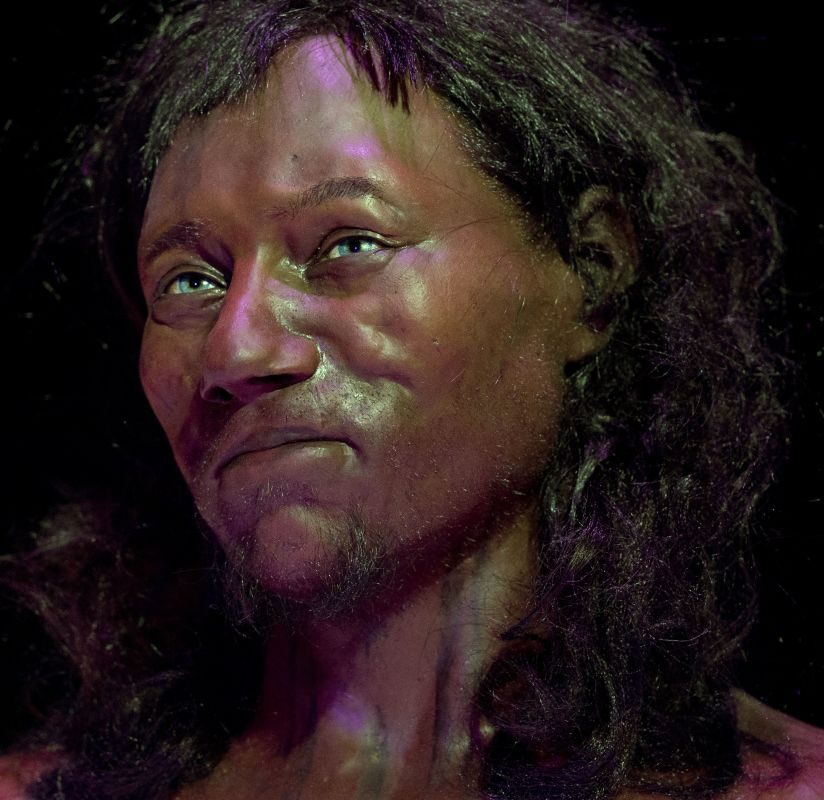Ireland’s Earliest Inhabitants Were Dark-Skinned With Blue Eyes
Source: JUSTIN TALLIS / Getty
Researchers are discovering new information about the earliest inhabitants of Ireland and some data suggests that the first settlers were Black people with blue eyes, according to the Irish Times.
In April 2021, Geneticist Dr. Lara Cassidy told the publication that forensic data revealed surprising information about Black prehistoric Irish people, who were known to be hunters and gathers. They lived on the island for nearly 4,000 years before settled farmers took over. The discovery was largely explored in a documentary called The Burren: Heart of Stone last year, where scientists developed a large genetic database of Irish genomes to help uncover more information about Ireland’s first natives.
“We know now from ancient genomes that farming was accompanied by a whole group of people moving into the continent from the region now known as modern Turkey, ” Cassidy explained.
The Black settlers were known to gather shellfish along the Burren, a karst landscape of bedrock incorporating a vast cracked pavement of glacial-era limestone located in the region of County Clare, which is southwest of Ireland. They eventually moved inland to hunt wild boars and gather hazelnuts. Scientists believe that farmers who migrated into the region during the neolithic period may have driven the original settlers out as they brought “cattle, sheep and goats, pottery” and new housing structures. Dr. Cassidy believes they may have had lighter skin than the hunter-gathers.
“There could have been violence. This would have been quite a dramatic colonization event,” she added.
Dutch Paleo-artists Adrie and Alfons Kennis discuss creating the remarkable face of Cheddar Man for forthcoming Channel 4 doc.
(NB: All three men are quite hairy, but Cheddar Man is the one in the middle) pic.twitter.com/ocDEPaYn5M
— Channel 4 Press (@C4Press) February 7, 2018
Back in 2018, geneticists at the University College London and the Natural History Museum found a Mesolithic skeleton dating back to 1903 that they believed had “dark to black skin” with blue eyes and curly hair, the Irish Post first reported.
Dr. Dan Bradley, a researcher behind the historic discovery, said that the skeleton, which was later dubbed Cheddar Man, could suggest that Europeans may have evolved years later on the island.
“The earliest Irish would have been the same as Cheddar Man and would have had darker skin than we have today,” said Bradley, who is a professor of genetics population at Trinity College Dublin.
“We think [ancient Irish populations] would be similar [to Cheddar Man],” he continued. “The current, very light skin we have in Ireland now is at the endpoint of thousands of years of surviving in a climate where there’s very little sun. It’s an adaptation to the need to synthesize vitamin D in the skin. It has taken thousands of years for it to become like it is today.”
Research shows that Cheddar Man’s tribe may have migrated to Britain at the end of the last Ice Age as researchers found DNA similarities between his skeleton remains and people from Spain, Luxembourg, and Hungary. Scientists were also able to find clues that could suggest nearly “30-40,000 people were living on the island of Ireland during the era when darker skin was common,” the Irish Post noted.
SEE ALSO:
The History Of Black People With Blue Eyes
Questions People Ask Google About Black People
The Antebellum Tale Of Black Slave Girl Molly And The Haunting Of Sorrel-Weed House

